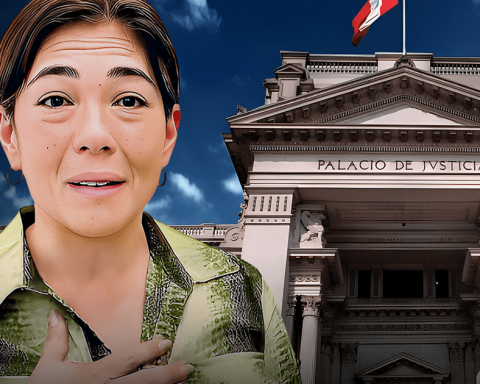The final stretch began in the face of the exit plebiscite on September 4 with the premiere -this Friday- of the television strip. They were 15 minutes in which the Approval and Rejection gave their arguments to convince the undecided to vote for them in less than a month.
The Approval slot had the participation of politicians, such as Vlado Mirosevic (PL), Natalia Piergentili (PPD) and Felipe Delpin (DC), but what took the most time were the proposals of the New Constitution, such as the right to water, own housing and health. The Rejection, on the other hand, was in charge of displaying its message against the Constitutional Convention, which prepared, according to them, the proposal with “rage.”
It may interest you:
He talked about this with The counter Cristián Leporati, Professor of Political Marketing at the Diego Portales University. “Regarding the fringe in general, that of progressivism, I think it maintains the codes. It maintains the usual codes. A lot of testimonials, a lot of social movement, common people and a lot, in general, joy. There are many messages that are crossing these minutes that are on the air, the different chapters that the strip has in the Approval, but you always have a breath of hope that crosses everything and a lot of positivism, in all the things that are being raised and said, such as social rights, the end of the sacrifice zones, decent housing, approve to improve”.
“And it also mixes a bit, nuanced that, with politicians. So there is also a mix of many people, a lot of people, a lot of community, and always with a lot of joy in general. I think it’s a code that generally has the progressivism in Chile, whether for presidential elections, mayoralties or whatever, in general, which is maintained as a logic of that political category and that value perspective. In general, always the logic of political campaigns, in that ideological perspective, they are more of a sketch, they are quite spontaneous, they don’t have, they don’t have the typical production of an advertising spot. They are much less finished, but that also probably gives them a lot more credibility because they look imperfect. And there I already cross a bit with the digital, the digital world is the world of the spontaneous, the world of self-recording a video, dancing on TikTok, making a testimonial with the camera in hand, an interview. All very spontaneous and imperfect. But that also gives credi bility,” he added.
On the Rejection side, according to Leporati, “in general there is little text here, there is little spoken story, it is much more the image, always what is behind is the audiovisual, more than what is overprinted, more than someone’s speech in And the counterpoint with the Rejection strip is maintained and is very noticeable. It is very noticeable because you go from a sketch look, spontaneous, more documentary, more imperfect, to a much more produced look. Clearly the Rejection strip, except for a few exceptions that are produced there, in a visual strip, of an advertising spot. This is a perfectly well-finished spot, with a fairly simple story, very memorable, which is the theme of love and rage. And give a opportunity to love, which basically means rejecting in order to improve”.
“Deep down in the Rejection there is only one hand. That is very noticeable. And there is only one narrative, and very well finished visually and also in the text, in the narrative itself. And that again leads us to the historical , that the right regularly makes very good political spots, closer to commercial language than the political one, and the left regularly makes the spot much more spontaneous and different, more testimonial. I don’t want to say that there is no testimonial in both cases. In both cases there are many testimonies. What happens is that in one case, in Approval, the testimonial is seen as more spontaneous. In the other case, it is a testimonial that is much more part of a spot. It is advertising. In other words, we are basically talking here about spontaneity versus production“, Add.
light vs dark
Regarding the appearance of the articles in the Approval slot, Leporati pointed out that “when one usually sees a campaign, commercial or political, the analysis should not be as we are doing it, because we deepen, verticalize and look for detail. But in In general, what matters here is in terms of audience, it’s what do you have left after watching this for 15 minutes? And in that you basically have two things left. The comparison that Approval is something positive, happy people. And the Rejection remains with you, rather it is something, it is not so pleasant. It is darker, more pessimistic, more negative. “
“Now, the challenge of Rejection is how, having that word to reject, which is already negative, how can it generate you in all this time, this week that there is something positive ahead. Because I was also present with Fernanda’s testimony, it’s hard , it’s super strong. They show images in addition to an assailant shooting up a commercial store and the guy is wounded in an armchair. So I think that Rejection has a no less challenge, which is to positiveize something that is negative and today or today From now, this morning, if you compare one thing, there was a very positive message, another negative, hard, heavy, dense message,” he added.


















